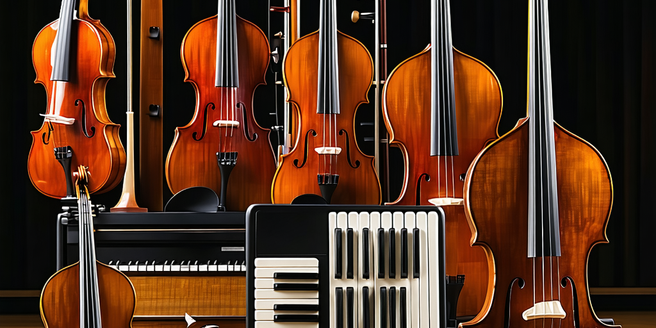
Understanding Different Genres and Styles
Exploring music genres and styles broadens our understanding of cultural diversity and artistic expression. Genres like rock, jazz, and classical have distinct characteristics and histories that influence today’s music landscape. Each style also holds unique instruments, rhythms, and harmonies that contribute to their identities. Jazz, with its improvisational nature, contrasts with classical music’s structured compositions. Understanding these differences enhances our appreciation for the artistry involved in creating music. Recognizing the evolution within genres, such as the transition from traditional to modern country music, highlights how cultural shifts and technological advancements shape music’s development. Whether it’s the aggressive tones of metal or the soothing sounds of classical, delving into music’s various forms provides insights into emotions, storytelling, and shared human experiences.
The History and Evolution of Music
The history of music is a rich tapestry woven from diverse traditions and influences. From ancient civilizations using rudimentary instruments to the vast orchestras of the Baroque period, music continually evolves alongside humanity. Early music set the foundation for scales and harmonies, while the Middle Ages introduced notation. The Renaissance brought complexity and emotion, paving the way for the intricate compositions of the Classical and Romantic periods. The 20th century saw a dramatic shift with the rise of jazz, blues, and rock ‘n’ roll, each leaving a profound impact on popular culture. Today, electronic and digital innovations expand possibilities, integrating global sounds and styles. Understanding music’s evolution reveals its power to reflect societal changes and connect people across time.
Key Elements of Musical Composition
Musical composition consists of key elements that collaborate to create harmony, rhythm, and emotion. Melody, often described as the song’s soul, provides a memorable and singable sequence of notes. Harmony supports the melody with chords, enriching texture and mood. Rhythm, the heartbeat of music, organizes durations and stresses, propelling compositions forward. Dynamics inject variation and intensity, guiding the listener’s emotional journey. Texture refers to how melodies interact, whether through contrapuntal or homophonic arrangements. Form, the structure of a piece, directs its flow and order. Together, these elements construct the sonic architecture of music, allowing composers to craft diverse auditory experiences. Whether composing a symphony or a pop song, understanding these foundational aspects enhances one’s ability to communicate feeling and narrative through music.
Famous Composers and Their Influences
Throughout history, renowned composers have shaped the musical landscape with groundbreaking works and innovative styles. Ludwig van Beethoven, known for his emotional depth and powerful symphonies, led the transition from classical to romantic periods. His deafness challenged him yet fueled his passion. Johann Sebastian Bach, a master of counterpoint, influenced countless musicians with his intricate compositions in the Baroque style. Mozart’s genius lay in his effortless grasp of melody and harmony, producing operas and symphonies that remain celebrated. More recently, John Williams revolutionized film scores, creating iconic themes for cinema. These composers drew inspiration from personal experiences, musical predecessors, and the sociopolitical climate of their eras. Studying their lives and works reveals a tapestry of influences and showcases the enduring impact of their contributions to the world of music.
Listening Techniques for Better Engagement
Effective listening techniques significantly enhance one’s engagement with music. Active listening involves dedicating full attention to the sound, isolating each instrument and vocal layer. This depth of attention allows for a deeper appreciation of intricate arrangements and subtleties. Analyzing lyrics offers insight into the artist’s message and emotional undertones. Exploring different audio formats, such as live recordings or remastered versions, can reveal alternate interpretations and production nuances. Embracing various genres with an open mind broadens perspectives and fosters a more comprehensive understanding of musical diversity. Contextualizing music within its cultural or historical background adds layers of appreciation. Additionally, discussing findings with peers encourages shared insights and differing opinions, enriching the experience. By refining these techniques, listeners can cultivate a more meaningful and immersive relationship with music.
Participating in Live Music Experiences
Live music experiences offer unparalleled opportunities for emotional and communal connections. Attending concerts, festivals, or intimate gigs allows audiences to engage with performers and fellow fans in unique settings. The energy of a live show is contagious, with spontaneous interactions and improvisations creating memorable moments. Observing musicians’ techniques and expressions in real time enhances understanding and appreciation of their craft. Additionally, live performances often present music in its rawest form, free from studio enhancements. Such authenticity fosters genuine connections between artists and listeners. Exploring various venues, from grand arenas to cozy local clubs, expands exposure to a wide range of acts and genres. Experiencing live music in person sharpens listening skills and opens pathways to new sounds and cultural phenomena, creating lifelong memories and enriching one’s musical journey.
